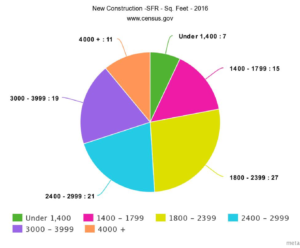We’re honored to bring you this guest blog from Tiny SMART House owner and founder – the man, the myth, the legend, Nathan Watson.
Intro to Permaculture
Everyone has heard the term “Permaculture.” But what is it? The short answer is that it is the utilization of local resources to benefit the local community. Semantics aside, it’s the philosophy of making do with what you have on hand. When there is a surplus, it is redistributed for the greatest benefit to the land and people. Everything has connections that can be utilized. For me permaculture is the process of finding better ways to live. Ingenuity is the corner stone.
With the resurgence of sustainable living, there seems, to me, to be too much information out there. There are certificate courses available if you are so inclined, but personally I have a more casual outlook on permaculture itself. How do we start the transition to sustainable living? What are some of the things I, as an individual, can do with limited resources? Let’s jump into a few ideas that will reduce negative input and/or create positive output, preferably, both. Once you embark on the road to sustainability, your life will become your project. More than that though, “You” become the project. After all, you are the most important member of the system you live in. You can have a good impact, simply by moving away from conventional ideas.
Aquaculture
Gray water can be used to support a small wetland, which will remove some toxins, before being used to water plants. A small wetland will attract wildlife and support its own communities. With some creativity you can add a lot of diversity to your space. Just by using water that is leaving the system, the system can be enriched.
Rainwater collection
When we think of harvesting rain, a lot of people imagine gutters, barrels and plumbing. I imagine a system where everything is used to benefit the project. I think of runoff management. The idea is to add as much of your excess rain water to your groundwater aquifer as possible. By using divots and berms it is possible to slow the water down enough to allow it to soak into the earth while moving it to a place it was be stored or used. This concept was used in Chile’ while I was volunteering there. The cabin had an old hand dug well that was always dirty and not very secure. There was an elaborate rain water collection system put in that never worked right. The well was used to water fruit trees and a garden. As the area developed, the water table got lower and lower. The area is in southern Chile and has weather similar to the Puget Sound. Just looking at it, you could see the water was not saturating and therefore contributing to the lowered water table. By using a series of tiny connected ponds lined with vegetation, water is be allowed to return to the ground. As a single project, the impact is minimal, but allowing nature to help nature is the first objective. Stopping run off preserves top soil and maximizes a natural resource.
Another idea is to use rain to generate power. First thought is electricity. But, there is kinetic energy also. Water can be used to pump water up hill, providing there is a surplus. Any surplus should be used to sustain the whole. Tanks don’t have to be big plastic eyesores. They can be integrated into buildings, covered in wood, rock, plants and turned back into usable space. I like the idea of a second story fort or patio myself. They can be put in the ground, but then you need to pump it back up. If you live on a hill, gravity becomes more of a resource, allowing the tanks to be elevated, but still intergraded with the landscape. Little generators can be installed on your gutters. Once again, this is a brave new frontier with lots of possibilities. Modern technology is ready for the next leap, even if it is back to old ideas.
